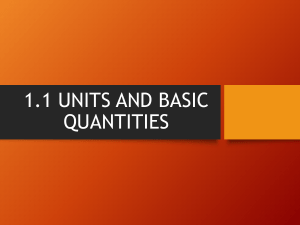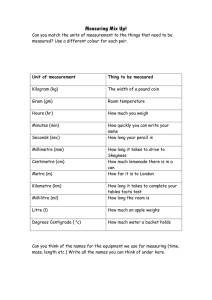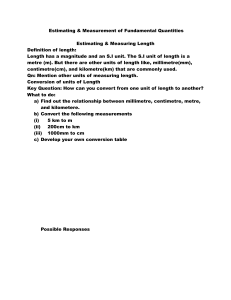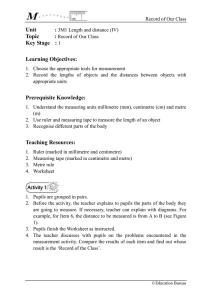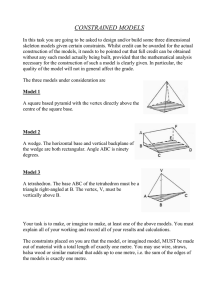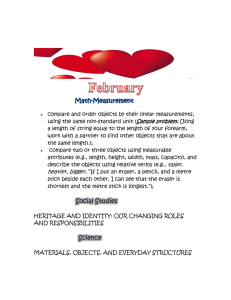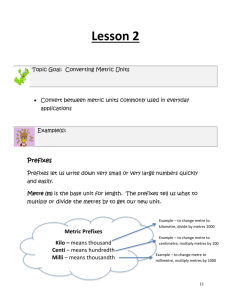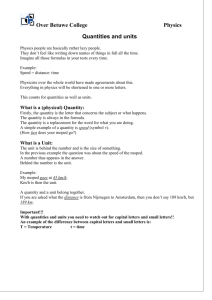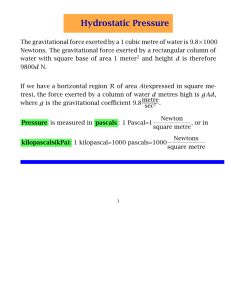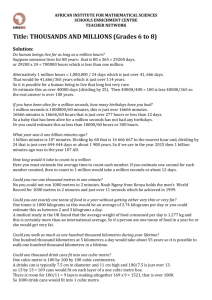Study Notes for Quiz on Monday
advertisement
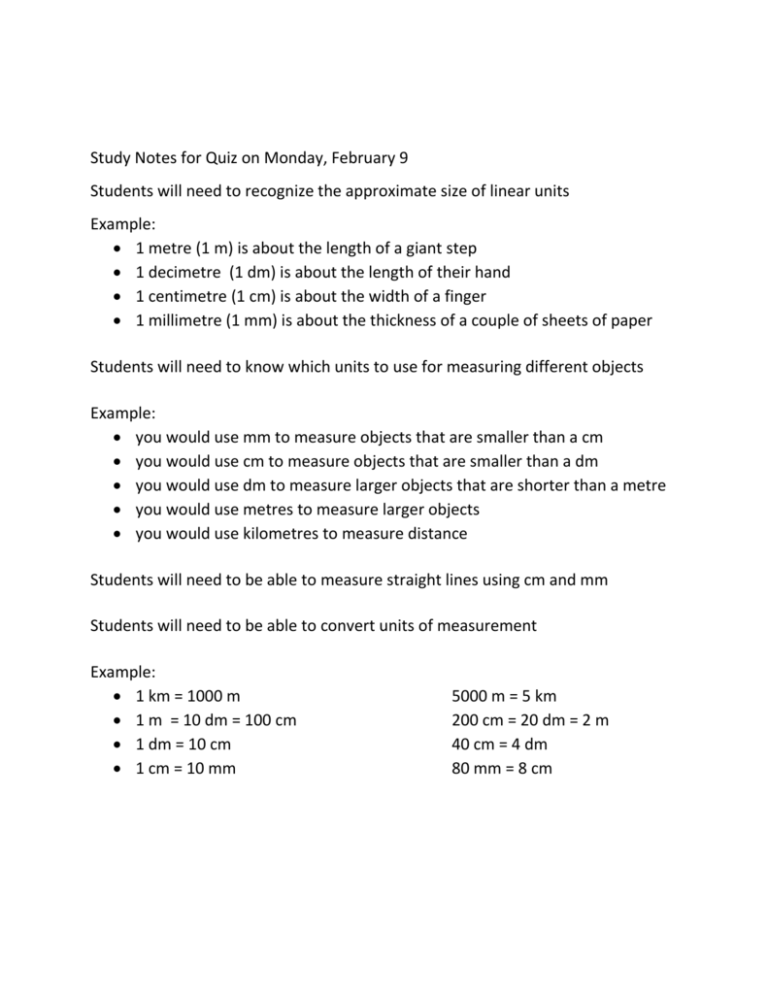
Study Notes for Quiz on Monday, February 9 Students will need to recognize the approximate size of linear units Example: 1 metre (1 m) is about the length of a giant step 1 decimetre (1 dm) is about the length of their hand 1 centimetre (1 cm) is about the width of a finger 1 millimetre (1 mm) is about the thickness of a couple of sheets of paper Students will need to know which units to use for measuring different objects Example: you would use mm to measure objects that are smaller than a cm you would use cm to measure objects that are smaller than a dm you would use dm to measure larger objects that are shorter than a metre you would use metres to measure larger objects you would use kilometres to measure distance Students will need to be able to measure straight lines using cm and mm Students will need to be able to convert units of measurement Example: 1 km = 1000 m 1 m = 10 dm = 100 cm 1 dm = 10 cm 1 cm = 10 mm 5000 m = 5 km 200 cm = 20 dm = 2 m 40 cm = 4 dm 80 mm = 8 cm
